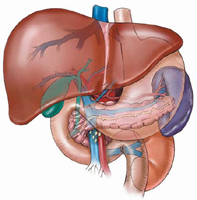Due to the fact that hepatitis is a disease is severe and poorly complete with complete cure, they are fraught with numerous serious consequences and complications, many consider diagnosis «hepatitis» equivalent sentence. Is it so?
Content
Be near!
The first problems faced by the patient, as well as his relatives - these are psychological problems. Among them are a feeling of their inferiority, loneliness, fear of infecting. As a result, a person is psychologically distinguished from the rest of the family, and it is very important for him that relatives and loved ones supported him in this difficult situation and helped adequately treat the disease.
The risk of infecting close people in a patient with hepatitis is lower than usually imagine. In domestic conditions, the hepatitis virus is very rarely transmitted. To infection, contact the infected biological fluid patient with the blood of a healthy person. And to avoid such contacts, it suffices to comply with uncomplicated rules.
Objects of hygiene, especially razor and manicure devices, in the patient should be strictly individual. In the event that the patient (infected) was injected with viral hepatitis, then he should be helped with extremely careful, avoiding the blood injected into his own ranks (better in rubber gloves).
But hepatitis cannot be protected from the patient - this can be caused by a strongest injury. Through communication, kisses, hugs, the use of the total dishes of the hepatitis virus is not transmitted, and the proximity of your favorite people is very important for the diseased.
Unpredictable enemy
However, in addition to psychological problems, hepatitis is danger from the point of view of the development of complications of the disease. Complications of hepatitis can be the disease of the biliary tract and liver coma.
Violations in the work of biliary tract are treatable and do not cause severe consequences. The liver coma, which occurs due to the mass lesion of the liver cells, is a sign of a lightning form of hepatitis, ending with a fatal outcome of almost 90% of cases. The cause of the hepatic coma is that the diseases falling into the blood of the patient the products of the decay of dead liver fabric are striking the central nervous system and cause a fuss of all life functions. Most often, these complications cause a mixed infection of viral hepatitis B and with.
An unfavorable option for the development of hepatitis, leading to a variety of negative consequences, is the transition of a disease in chronic form.
Unfortunately, when hepatitis is infected, it is usually impossible to say how further events will develop: whether hepatitis will be acute, which is successfully treated, or will become chronic.
Target - liver
 The danger of chronic hepatitis is that it can lead to cirrhosis, and sometimes to liver cancer. Most likely the development of these complications in hepatitis C, the acute form of which goes into chronic in 70-80% of cases.
The danger of chronic hepatitis is that it can lead to cirrhosis, and sometimes to liver cancer. Most likely the development of these complications in hepatitis C, the acute form of which goes into chronic in 70-80% of cases.
Cirrhosis of the liver is a chronic progressive disease that occurs approximately 20% of patients with viral hepatitis with or hepatitis B in combination with hepatitis D or without.
Cirrhosis is expressed by the dystrophy and necrosis of hepatic fabric, signs of hepatic insufficiency and increasing blood pressure in the dial vein of the liver. Therefore, with cirrhosis, the normal blood flow in the liver is disturbed, and this leads to the fact that due to an increase in blood flow in the esophagus and the stomach, the corresponding blood vessels are expanding and can become a source of bleeding.
In addition, cirrhosis of the liver is accompanied by the growth of connective tissue and deep disruption of the structure and liver function, leading in severe cases to liver cancer. The complexity of the treatment of the cirrhosis is that it is an irreversible change in the hepatic tissue, that is, it is impossible to eliminate the formed cirrhosis, even if the inflammation of the liver has already passed. Therefore, the treatment of viral hepatitis needs to start as early as possible.
Some people infected with the hepatitis B, C and D virus are not sick, but, being the carriers of the hepatitis virus, are dangerous to others.
In addition, in hepatitis therapy with there is a concept “Imaginary recovery”, When, after the course of treatment, these biochemical blood tests come to normal, but the virus continues to exist in the patient's body. The existence of this phenomenon, which can last for many years, dictates the need for regular observation of patients and compulsory specific treatment.
Viral attack can be stopped!
Extremely severe consequences and unfavorable prognosis for the patient's life cause mixed forms of viral hepatitis when several viruses are at the same time in the patient's body. More often than others, combinations of hepatitis B viruses and hepatitis D or hepatitis B and hepatitis with. Even possible «triple» An option of hepatitis, which is caused by hepatitis V viruses, C and D.
Although hepatitis, especially the forms B and C, is a life-threatening patient with infection, still it should be remembered that it is impossible to consider hepatitis inevitably fatal disease. Most often hepatitis is possible if you do not fully cure, then avoid severe consequences. In most cases, if the treatment is started on time, it is possible to keep the liver and stop the breeding of the virus.









